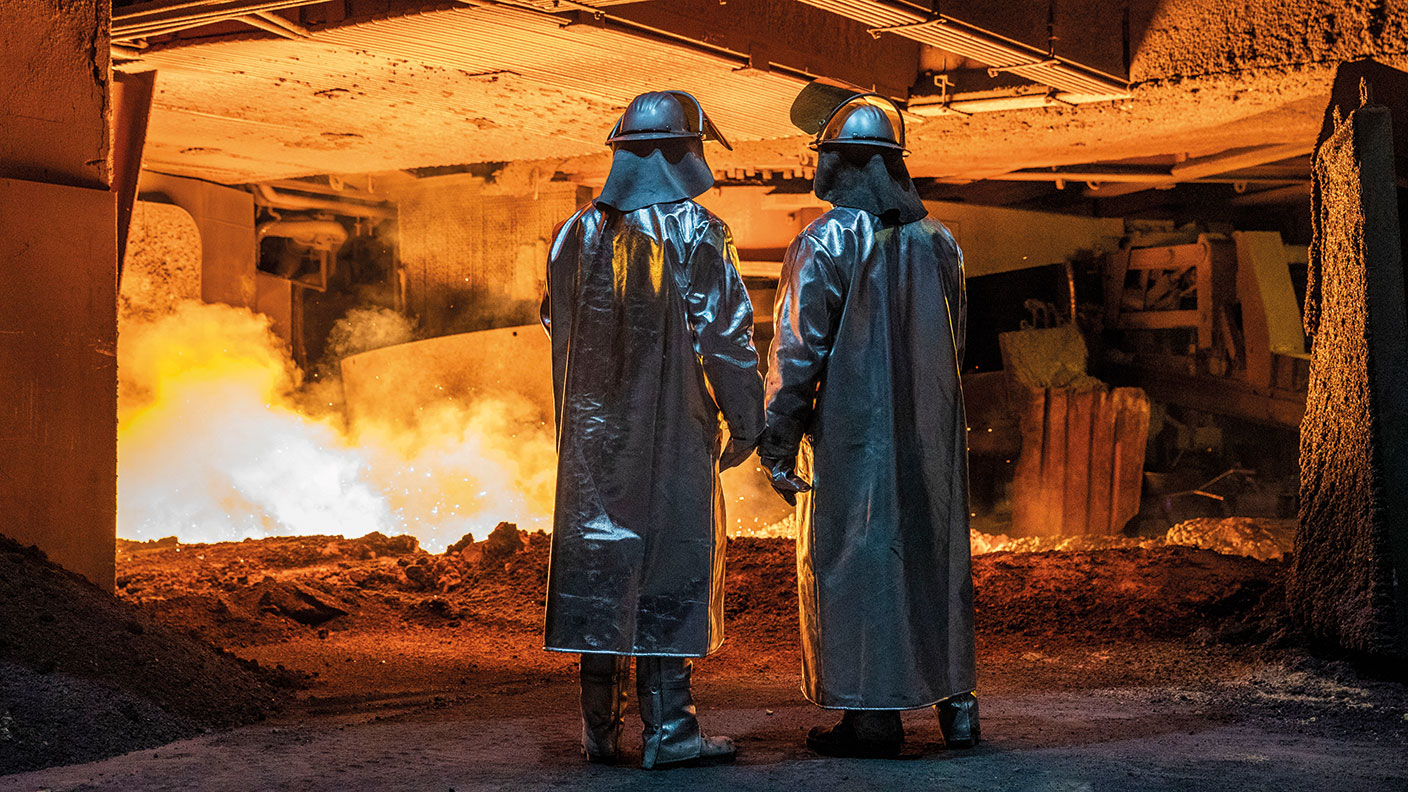
“Forecasting commodity prices is a mug’s game,” says The Economist. The magazine knows that better than most, having been “much mocked for [its] suggestion in 1999 that, in a world ‘drowning in oil’, a barrel of the stuff might cost as little as $5”. Crude prices subsequently peaked at nearly $150 per barrel in 2008. Yet today, “the world is again awash” and West Texas Intermediate crude prices even briefly went negative last month due to a shortage of storage space. “Analysts are asking again, as in 1999, if the world will have to get used to permanently low prices not just for oil but for other commodities too.”
As cheap as they’ve ever been
If this kind of sentiment doesn’t make you want to invest in natural resources, it’s hard to know what would, say Lucas White and Jeremy Grantham of asset manager GMO. Consider how this same cycle has played out over the last few decades. During the 1980s and 1990s, commodity prices fell and producers cut back on investment, “leaving commodity markets unprepared to meet the China-led boom in commodity demand that started in earnest in the early 2000s”. The result was supply shortages and soaring prices – not just for oil but for metals as well.
Inevitably that drove a surge in capital expenditure by producers, which meant “new commodity supply flooded the market” in the 2010s. Prices dropped 18% on average over the next decade; oil fell twice as much. By the end of last year, the cycle had run its course to the point where resources “very well positioned to rebound after a tough decade”.
MoneyWeek
Subscribe to MoneyWeek today and get your first six magazine issues absolutely FREE

Sign up to Money Morning
Don't miss the latest investment and personal finances news, market analysis, plus money-saving tips with our free twice-daily newsletter
Don't miss the latest investment and personal finances news, market analysis, plus money-saving tips with our free twice-daily newsletter
Then the coronavirus crisis hit. Commodity prices slid, as did the shares in the resources sector, making cheap assets even cheaper. At present, energy and metals firms are valued at a discount of almost 80% to the S&P 500, against a long-term average of around 20%. “Over the last 100 years or so, we have never seen resource companies trading at anything close to these levels relative to the broader market.”
Balancing supply and demand
We can’t expect commodity prices to rebound as fast as they did after the global financial crisis in 2007-2009, says Paul Robinson of consultancy CRU Group in the Financial Times. The sector is unlikely to see the same appetite for raw materials that resulted from China’s infrastructure stimulus back then. That implies a slower recovery in demand this time.
Still, “margins remain positive for most mining assets”, while companies have manageable levels of debt. This puts them in a resilient position. So long as miners maintain “supply discipline” – ie, avoid glutting the market at a time when demand is uncertain – “commodity, share and related debt prices could all outperform in the weeks and months ahead”.
Get the latest financial news, insights and expert analysis from our award-winning MoneyWeek team, to help you understand what really matters when it comes to your finances.
MoneyWeek is written by a team of experienced and award-winning journalists, plus expert columnists. As well as daily digital news and features, MoneyWeek also publishes a weekly magazine, covering investing and personal finance. From share tips, pensions, gold to practical investment tips - we provide a round-up to help you make money and keep it.
-
 The graphene revolution is progressing slowly but surely
The graphene revolution is progressing slowly but surelyEnthusiasts thought the discovery that graphene, a form of carbon, could be extracted from graphite would change the world. They might've been early, not wrong.
-
 How Javier Milei led an economic revolution in Argentina
How Javier Milei led an economic revolution in ArgentinaFollowing several setbacks, Argentine president Javier Milei's pro-market reforms have been widely endorsed in a national poll. Britain will need the same
-
 Halifax: House price slump continues as prices slide for the sixth consecutive month
Halifax: House price slump continues as prices slide for the sixth consecutive monthUK house prices fell again in September as buyers returned, but the slowdown was not as fast as anticipated, latest Halifax data shows. Where are house prices falling the most?
-
 Rents hit a record high - but is the opportunity for buy-to-let investors still strong?
Rents hit a record high - but is the opportunity for buy-to-let investors still strong?UK rent prices have hit a record high with the average hitting over £1,200 a month says Rightmove. Are there still opportunities in buy-to-let?
-
 Pension savers turn to gold investments
Pension savers turn to gold investmentsInvestors are racing to buy gold to protect their pensions from a stock market correction and high inflation, experts say
-
 Where to find the best returns from student accommodation
Where to find the best returns from student accommodationStudent accommodation can be a lucrative investment if you know where to look.
-
 The world’s best bargain stocks
The world’s best bargain stocksSearching for bargain stocks with Alec Cutler of the Orbis Global Balanced Fund, who tells Andrew Van Sickle which sectors are being overlooked.
-
 Revealed: the cheapest cities to own a home in Britain
Revealed: the cheapest cities to own a home in BritainNew research reveals the cheapest cities to own a home, taking account of mortgage payments, utility bills and council tax
-
 UK recession: How to protect your portfolio
UK recession: How to protect your portfolioAs the UK recession is confirmed, we look at ways to protect your wealth.
-
 Buy-to-let returns fall 59% amid higher mortgage rates
Buy-to-let returns fall 59% amid higher mortgage ratesBuy-to-let returns are slumping as the cost of borrowing spirals.

